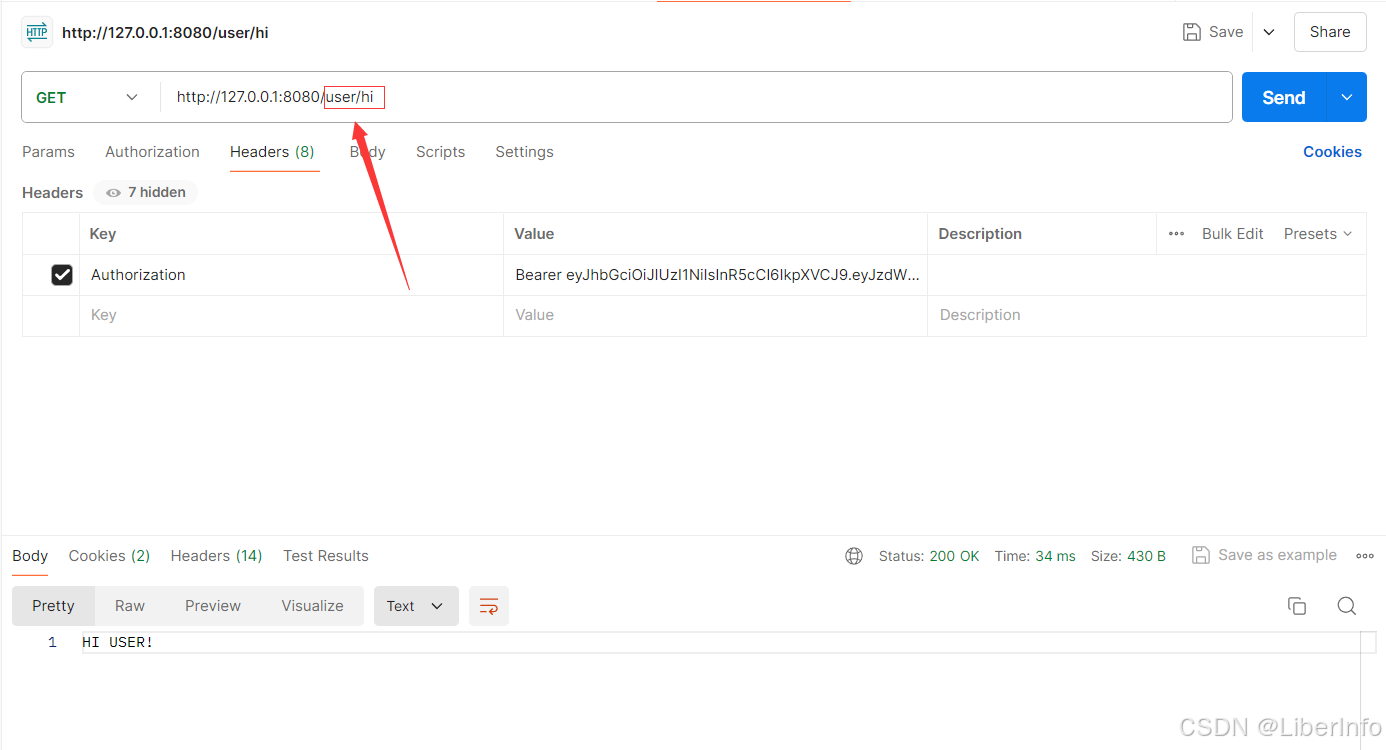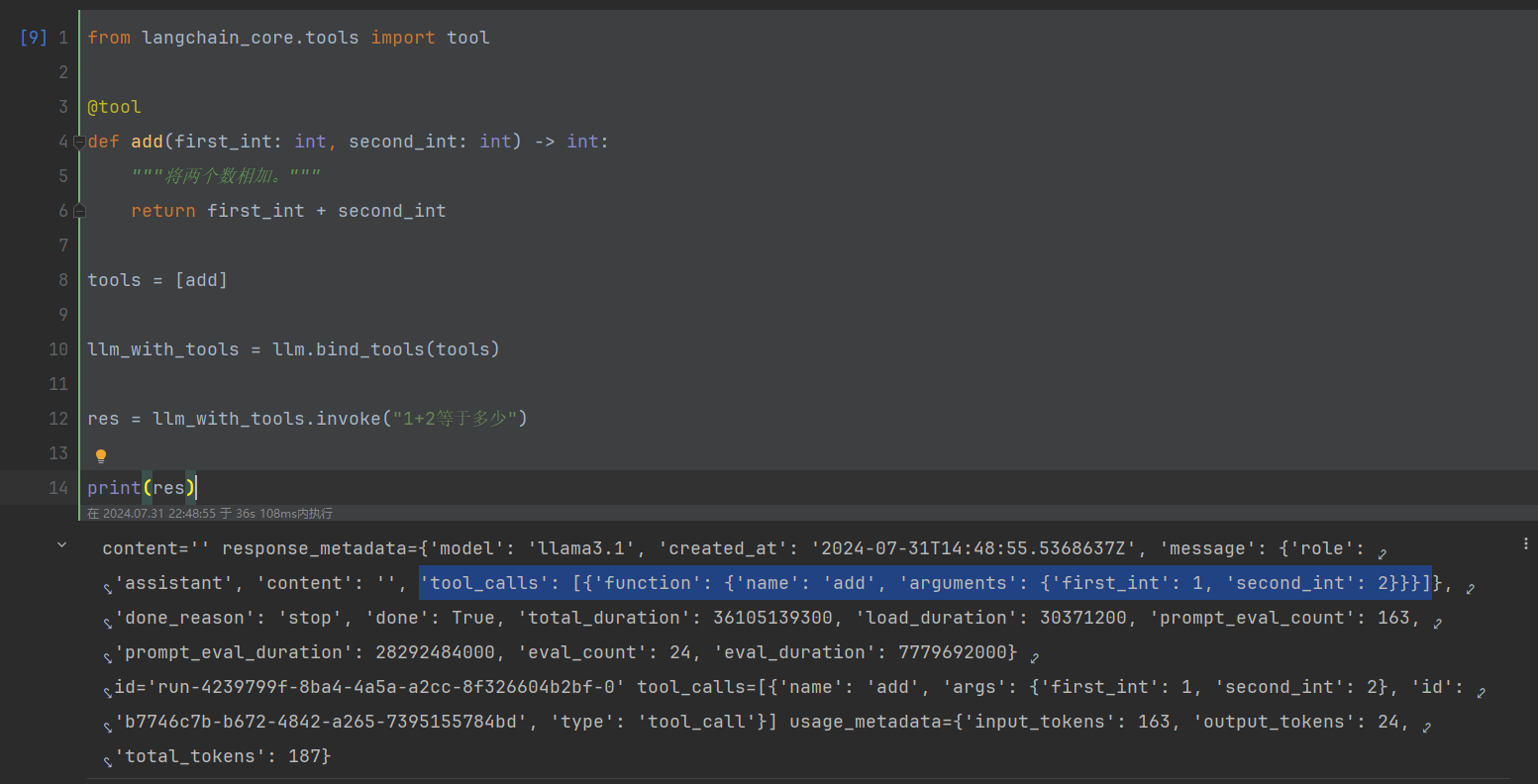1. 项目结构
2. 数据库相关操作
create database user_profiles;
use user_profiles;
CREATE TABLE `user`
(
`id` INT AUTO_INCREMENT PRIMARY KEY,
`username` VARCHAR(255) NOT NULL UNIQUE,
`password` VARCHAR(255) NOT NULL,
`email` VARCHAR(255) UNIQUE,
`role` VARCHAR(255) DEFAULT 'USER',
`enabled` BOOLEAN DEFAULT TRUE
);
src
main
java
org.example
config
LettuceConfig.java
package org.example.config;
import io.lettuce.core.RedisClient;
import io.lettuce.core.RedisURI;
import io.lettuce.core.api.StatefulRedisConnection;
import io.lettuce.core.api.sync.RedisCommands;
import org.springframework.beans.factory.annotation.Value;
import org.springframework.context.annotation.Bean;
import org.springframework.context.annotation.Configuration;
import org.springframework.data.redis.connection.RedisConnectionFactory;
import org.springframework.data.redis.connection.lettuce.LettuceConnectionFactory;
import org.springframework.data.redis.core.RedisTemplate;
import org.springframework.data.redis.serializer.GenericJackson2JsonRedisSerializer;
import org.springframework.data.redis.serializer.StringRedisSerializer;
@Configuration // 标注这是一个配置类
public class LettuceConfig {
@Bean // 定义一个 RedisTemplate Bean,用于与 Redis 进行交互
public RedisTemplate<String, Object> redisTemplate(RedisConnectionFactory connectionFactory) {
RedisTemplate<String, Object> template = new RedisTemplate<>();
template.setConnectionFactory(connectionFactory);
template.setKeySerializer(new StringRedisSerializer()); // 设置键的序列化方式
template.setValueSerializer(new GenericJackson2JsonRedisSerializer()); // 设置值的序列化方式
template.setHashKeySerializer(new StringRedisSerializer()); // 设置哈希键的序列化方式
template.setHashValueSerializer(new GenericJackson2JsonRedisSerializer()); // 设置哈希值的序列化方式
return template;
}
@Value("${redis.host}") // 从配置文件中注入 Redis 主机地址
private String redisHost;
@Value("${redis.port}") // 从配置文件中注入 Redis 端口号
private int redisPort;
@Bean // 定义一个 RedisClient Bean,用于创建 Redis 客户端
public RedisClient redisClient() {
RedisURI redisURI = RedisURI.builder()
.withHost(redisHost)
.withPort(redisPort)
.build();
return RedisClient.create(redisURI);
}
@Bean // 定义一个 StatefulRedisConnection Bean,用于管理 Redis 连接
public StatefulRedisConnection<String, String> connection(RedisClient redisClient) {
return redisClient.connect();
}
@Bean // 定义一个 RedisCommands Bean,用于同步执行 Redis 命令
public RedisCommands<String, String> redisCommands(StatefulRedisConnection<String, String> connection) {
return connection.sync();
}
@Bean // 定义一个 RedisConnectionFactory Bean,用于创建 Redis 连接工厂
public RedisConnectionFactory redisConnectionFactory() {
return new LettuceConnectionFactory(redisHost, redisPort);
}
}
解释:该配置类 LettuceConfig 用于配置与 Redis 相关的各种 Bean,包括 Redis 客户端、连接工厂、连接管理和 Redis 命令执行等 。
SecurityConfig.java
package org.example.config;
import com.fasterxml.jackson.databind.ObjectMapper;
import org.example.filter.JwtAuthenticationFilter;
import org.springframework.beans.factory.annotation.Autowired;
import org.springframework.context.annotation.Bean;
import org.springframework.context.annotation.Configuration;
import org.springframework.security.config.annotation.web.builders.HttpSecurity;
import org.springframework.security.config.annotation.web.configuration.EnableWebSecurity;
import org.springframework.security.config.annotation.web.configurers.AbstractHttpConfigurer;
import org.springframework.security.config.http.SessionCreationPolicy;
import org.springframework.security.web.AuthenticationEntryPoint;
import org.springframework.security.web.SecurityFilterChain;
import org.springframework.security.web.access.AccessDeniedHandler;
import org.springframework.security.web.authentication.UsernamePasswordAuthenticationFilter;
import jakarta.servlet.http.HttpServletRequest;
import jakarta.servlet.http.HttpServletResponse;
import org.springframework.security.access.AccessDeniedException;
import org.springframework.security.core.AuthenticationException;
import java.io.IOException;
import java.util.HashMap;
import java.util.Map;
@Configuration // 标注这是一个配置类
@EnableWebSecurity // 启用 Spring Security 的 Web 安全支持
public class SecurityConfig {
@Autowired
private JwtAuthenticationFilter jwtAuthenticationFilter;
@Bean // 定义一个 SecurityFilterChain Bean,用于配置 Spring Security
public SecurityFilterChain securityFilterChain(HttpSecurity http) throws Exception {
http.csrf(AbstractHttpConfigurer::disable) // 禁用 CSRF 保护
.authorizeHttpRequests(authorize -> authorize
.requestMatchers("/auth/**").permitAll() // 允许公开访问 /auth/** 端点
.requestMatchers("/admin/**").hasRole("ADMIN") // 限制 admin 路径只有 ADMIN 角色能访问
.requestMatchers("/user/**").hasRole("USER") // 限制 user 路径只有 USER 角色能访问
.anyRequest().authenticated()) // 其他请求需要认证
.sessionManagement(session -> session
.sessionCreationPolicy(SessionCreationPolicy.STATELESS)) // 使用无状态会话
.exceptionHandling(exception -> exception
.accessDeniedHandler(new AccessDeniedHandler() { // 自定义处理访问被拒绝情况
@Override
public void handle(HttpServletRequest request, HttpServletResponse response, AccessDeniedException accessDeniedException) throws IOException {
sendErrorResponse(response, HttpServletResponse.SC_FORBIDDEN, "无权访问该资源");
}
})
.authenticationEntryPoint(new AuthenticationEntryPoint() { // 自定义处理未认证情况
@Override
public void commence(HttpServletRequest request, HttpServletResponse response, AuthenticationException authException) throws IOException {
sendErrorResponse(response, HttpServletResponse.SC_UNAUTHORIZED, "未认证,请先登录");
}
})) // 使用匿名类处理未认证和越权访问
.addFilterBefore(jwtAuthenticationFilter, UsernamePasswordAuthenticationFilter.class); // 添加 JWT 过滤器
return http.build();
}
// 定义发送错误响应的方法
private void sendErrorResponse(HttpServletResponse response, int status, String message) throws IOException {
response.setStatus(status);
response.setContentType("application/json");
response.setCharacterEncoding("UTF-8");
Map<String, String> errorResponse = new HashMap<>();
errorResponse.put("error", message);
response.getWriter().write(new ObjectMapper().writeValueAsString(errorResponse));
}
}
解释:通过以上配置,SecurityConfig 类确保了应用程序的安全性,支持基于 JWT 的无状态认证,并提供了灵活的请求授权和自定义异常处理机制。
ShardingSphereConfig.java
package org.example.config;
import org.apache.shardingsphere.driver.api.yaml.YamlShardingSphereDataSourceFactory;
import org.springframework.beans.factory.annotation.Value;
import org.springframework.context.annotation.Bean;
import org.springframework.context.annotation.Configuration;
import org.springframework.core.io.Resource;
import org.springframework.core.io.ResourceLoader;
import javax.sql.DataSource;
import java.io.IOException;
import java.sql.SQLException;
@Configuration // 标注这是一个配置类
public class ShardingSphereConfig {
@Value("classpath:shardingsphere.yml") // 从类路径中加载 ShardingSphere 配置文件
private Resource configResource;
@Bean // 定义一个 DataSource Bean,用于配置数据源
public DataSource dataSource(ResourceLoader resourceLoader) throws SQLException, IOException {
return YamlShardingSphereDataSourceFactory.createDataSource(configResource.getInputStream().readAllBytes()); // 创建并返回 ShardingSphere 数据源
}
}
解释:通过以上配置,ShardingSphereConfig 类确保了应用程序可以正确加载 ShardingSphere 配置文件并创建数据源,从而支持分库分表和读写分离等高级数据库操作。
controller
AdminController.java
package org.example.controller;
import org.example.util.RedisJwtUtil;
import org.springframework.beans.factory.annotation.Autowired;
import org.springframework.http.HttpStatus;
import org.springframework.http.ResponseEntity;
import org.springframework.web.bind.annotation.*;
@RestController
@RequestMapping("/admin") // 映射请求到 "/admin" 路径
public class AdminController {
@GetMapping("/hi") // 处理 GET 请求 "/admin/hi"
public String index() {
return "HI ADMIN!";
}
@Autowired
private RedisJwtUtil redisJwtUtil;
@PostMapping("/blacklist") // 处理 POST 请求 "/admin/blacklist"
public ResponseEntity<String> addToBlacklist(@RequestParam String ipAddress) {
redisJwtUtil.addToBlacklist(ipAddress); // 调用工具类方法将 IP 地址加入黑名单
return ResponseEntity.status(HttpStatus.OK).body("IP地址已加入黑名单"); // 返回成功消息
}
@DeleteMapping("/blacklist") // 处理 DELETE 请求 "/admin/blacklist"
public ResponseEntity<String> removeFromBlacklist(@RequestParam String ipAddress) {
redisJwtUtil.removeFromBlacklist(ipAddress); // 调用工具类方法将 IP 地址从黑名单中移除
return ResponseEntity.status(HttpStatus.OK).body("IP地址已从黑名单中移除"); // 返回成功消息
}
}
说明:通过以上配置,AdminController 类提供了管理员的基本操作接口,包括欢迎信息的显示和 IP 地址黑名单的管理。
AuthController.java
package org.example.controller;
import org.example.entity.User;
import org.example.entity.UserVo;
import org.example.service.UserService;
import org.example.util.RedisJwtUtil;
import org.springframework.beans.factory.annotation.Autowired;
import org.springframework.http.HttpStatus;
import org.springframework.http.ResponseEntity;
import org.springframework.security.authentication.AuthenticationManager;
import org.springframework.security.authentication.BadCredentialsException;
import org.springframework.security.authentication.UsernamePasswordAuthenticationToken;
import org.springframework.security.core.Authentication;
import org.springframework.security.core.context.SecurityContextHolder;
import org.springframework.security.crypto.password.PasswordEncoder;
import org.springframework.web.bind.annotation.*;
import java.util.HashMap;
import java.util.Map;
@RestController
@RequestMapping("/auth") // 映射请求到 "/auth" 路径
public class AuthController {
@Autowired
private AuthenticationManager authenticationManager;
@Autowired
private PasswordEncoder passwordEncoder;
@Autowired
private UserService userService;
@Autowired
private RedisJwtUtil redisJwtUtil;
@PostMapping("/register") // 处理 POST 请求 "/auth/register"
public ResponseEntity<UserVo<?>> register(@RequestBody User user) {
user.setPassword(passwordEncoder.encode(user.getPassword())); // 加密用户密码
try {
userService.register(user); // 注册用户
String token = redisJwtUtil.generateToken(user.getUsername()); // 生成 JWT
redisJwtUtil.saveToken(user.getUsername(), token); // 保存 JWT
Map<String, String> tokenData = new HashMap<>();
tokenData.put("token", "Bearer " + token); // 将 JWT 放入响应中
return ResponseEntity.ok(new UserVo<>(HttpStatus.OK.value(), "Register Success", tokenData)); // 返回成功响应
} catch (Exception e) {
return ResponseEntity.status(HttpStatus.CONFLICT).body(new UserVo<>(HttpStatus.CONFLICT.value(), "Register failed: Username already exists!", null)); // 返回失败响应
}
}
@PostMapping("/login") // 处理 POST 请求 "/auth/login"
public ResponseEntity<UserVo<?>> login(@RequestBody User user) {
try {
Authentication authentication = authenticationManager.authenticate(
new UsernamePasswordAuthenticationToken(user.getUsername(), user.getPassword())); // 进行身份验证
SecurityContextHolder.getContext().setAuthentication(authentication); // 设置安全上下文
String token = redisJwtUtil.generateToken(user.getUsername()); // 生成 JWT
redisJwtUtil.saveToken(user.getUsername(), token); // 保存 JWT
Map<String, String> tokenData = new HashMap<>();
tokenData.put("token", "Bearer " + token); // 将 JWT 放入响应中
return ResponseEntity.ok(new UserVo<>(HttpStatus.OK.value(), "Login Success", tokenData)); // 返回成功响应
} catch (BadCredentialsException e) {
return ResponseEntity.status(HttpStatus.UNAUTHORIZED).body(new UserVo<>(HttpStatus.UNAUTHORIZED.value(), "Login failed: Invalid username or password", null)); // 返回失败响应
}
}
@PostMapping("/logout") // 处理 POST 请求 "/auth/logout"
public ResponseEntity<UserVo<String>> logout(@RequestHeader("Authorization") String header) {
if (header != null && header.startsWith("Bearer ")) {
String token = header.substring(7); // 提取 JWT
String username = redisJwtUtil.extractUsername(token); // 提取用户名
if (username != null) {
redisJwtUtil.deleteToken(username); // 删除 JWT
userService.evictUserCache(username); // 清除用户缓存
SecurityContextHolder.clearContext(); // 清除安全上下文
return ResponseEntity.ok(new UserVo<>(HttpStatus.OK.value(), "Logout Success", null)); // 返回成功响应
}
}
return ResponseEntity.status(HttpStatus.BAD_REQUEST).body(new UserVo<>(HttpStatus.BAD_REQUEST.value(), "Invalid request", null)); // 返回失败响应
}
}
解释:通过以上配置,AuthController 类提供了用户注册、登录和注销的接口,支持基于 JWT 的无状态认证,并管理用户的认证状态和缓存。
UserController.java
package org.example.controller;
import org.springframework.web.bind.annotation.GetMapping;
import org.springframework.web.bind.annotation.RequestMapping;
import org.springframework.web.bind.annotation.RestController;
@RestController
@RequestMapping("/user")
public class UserController {
@GetMapping("/hi")
public String hi() {
return "HI USER!";
}
}
解释:通过以上配置,UserController 类提供了一个简单的用户接口,响应特定路径的 GET 请求并返回一条欢迎信息。
entity
User.java
package org.example.entity;
import lombok.Data;
@Data
public class User {
private Integer id;
private String username;
private String password;
private String email;
private String role;
private Boolean enabled;
}
UserVo.java
package org.example.entity;
import lombok.AllArgsConstructor;
import lombok.Data;
@Data
@AllArgsConstructor
public class UserVo<T> {
private int status;
private String message;
private T data;
}
filter
JwtAuthenticationFilter.java
package org.example.filter;
import com.fasterxml.jackson.databind.ObjectMapper;
import jakarta.servlet.FilterChain;
import jakarta.servlet.http.HttpServletRequest;
import jakarta.servlet.http.HttpServletResponse;
import org.example.util.RedisJwtUtil;
import org.springframework.beans.factory.annotation.Autowired;
import org.springframework.security.authentication.UsernamePasswordAuthenticationToken;
import org.springframework.security.core.context.SecurityContextHolder;
import org.springframework.security.core.userdetails.UserDetails;
import org.springframework.security.core.userdetails.UserDetailsService;
import org.springframework.security.web.authentication.WebAuthenticationDetailsSource;
import org.springframework.stereotype.Component;
import org.springframework.web.filter.OncePerRequestFilter;
import java.io.IOException;
import java.util.HashMap;
import java.util.Map;
@Component
public class JwtAuthenticationFilter extends OncePerRequestFilter {
@Autowired
private UserDetailsService userDetailsService;
@Autowired
private RedisJwtUtil redisJwtUtil;
private final ObjectMapper objectMapper = new ObjectMapper();
private void sendErrorResponse(HttpServletResponse response, int status, String message) throws IOException {
response.setStatus(status);
response.setContentType("application/json");
response.setCharacterEncoding("UTF-8");
Map<String, String> errorResponse = new HashMap<>();
errorResponse.put("error", message);
response.getWriter().write(objectMapper.writeValueAsString(errorResponse));
}
@Override
protected void doFilterInternal(HttpServletRequest request, HttpServletResponse response, FilterChain filterChain)
throws IOException {
// 获取客户端IP地址
String clientIP = request.getRemoteAddr();
String path = request.getRequestURI();
try {
// 检查IP是否在黑名单中
if (redisJwtUtil.isBlacklisted(clientIP)) {
sendErrorResponse(response, HttpServletResponse.SC_FORBIDDEN, "该IP地址已被禁止访问");
return;
}
// 检查IP频率限制
if (redisJwtUtil.isRateLimited(clientIP, path)) {
sendErrorResponse(response, 429, "请求过多,请稍后再试");
return;
}
// 从请求头中获取 Authorization 字段
String header = request.getHeader("Authorization");
String token = null;
String username = null;
// JWT Token的形式为"Bearer token",移除 Bearer 单词,只获取 Token 部分
if (header != null && header.startsWith("Bearer ")) {
token = header.substring(7);
try {
// 从 Token 中提取用户名
username = redisJwtUtil.extractUsername(token);
} catch (Exception e) {
// 无效的 JWT Token 或无法解析
sendErrorResponse(response, HttpServletResponse.SC_UNAUTHORIZED, "未认证,请先登录!");
return;
}
}
// 获取到Token后,进行验证
if (username != null && SecurityContextHolder.getContext().getAuthentication() == null) {
// 验证 Token 是否在 Redis 中存在且有效
if (redisJwtUtil.redisValidate(token)) {
// 根据用户名加载用户详情
UserDetails userDetails = userDetailsService.loadUserByUsername(username);
if (userDetails != null) {
// 如果 Token 有效,配置 Spring Security 手动设置认证
UsernamePasswordAuthenticationToken authenticationToken = new UsernamePasswordAuthenticationToken(
userDetails, null, userDetails.getAuthorities());
authenticationToken.setDetails(new WebAuthenticationDetailsSource().buildDetails(request));
// 在设置 Authentication 之后,指定当前用户已认证
SecurityContextHolder.getContext().setAuthentication(authenticationToken);
} else {
sendErrorResponse(response, HttpServletResponse.SC_UNAUTHORIZED, "未认证,请先登录!");
return;
}
} else {
sendErrorResponse(response, HttpServletResponse.SC_UNAUTHORIZED, "未认证,请先登录!");
return;
}
}
// 如果没有token或token无效,将请求传递到过滤器链的下一个过滤器
filterChain.doFilter(request, response);
} catch (Exception e) {
// 捕获所有异常,并发送错误响应
sendErrorResponse(response, HttpServletResponse.SC_INTERNAL_SERVER_ERROR, "服务器内部错误");
}
}
}
解释:JwtAuthenticationFilter 类是一个自定义的 Spring Security 过滤器,用于对每个请求进行 JWT 验证和处理。该过滤器继承了 OncePerRequestFilter,保证在每个请求过程中只调用一IP。
1. 黑名单检查:确保在黑名单中的 IP 无法访问。
2. IP 请求频率限制:防止单个 IP 频繁请求导致服务器过载。
3. JWT 验证:从请求头中提取 JWT,验证其有效性,确保用户已认证。
4. 错误处理:捕获并处理所有异常,返回适当的错误响应。
该过滤器确保每个请求都经过严格的 IP 检查和 JWT 验证,提升了应用的安全性和稳定性。
mapper
UserMapper.java
package org.example.mapper;
import org.apache.ibatis.annotations.Insert;
import org.apache.ibatis.annotations.Mapper;
import org.apache.ibatis.annotations.Options;
import org.apache.ibatis.annotations.Select;
import org.example.entity.User;
@Mapper
public interface UserMapper {
@Insert("INSERT INTO user(username, password, email, role, enabled) VALUES(#{username}, #{password}, #{email}, #{role}, #{enabled})")
@Options(useGeneratedKeys = true, keyProperty = "id")
void register(User user);
@Select("SELECT * FROM user WHERE username = #{username} ")
User findByUsername(String username);
}
service
UserService.java
package org.example.service;
import org.example.entity.User;
import org.example.mapper.UserMapper;
import org.example.util.AESUtil;
import org.springframework.beans.factory.annotation.Autowired;
import org.springframework.beans.factory.annotation.Value;
import org.springframework.data.redis.core.RedisTemplate;
import org.springframework.security.core.authority.SimpleGrantedAuthority;
import org.springframework.security.core.userdetails.UserDetails;
import org.springframework.security.core.userdetails.UserDetailsService;
import org.springframework.security.core.userdetails.UsernameNotFoundException;
import org.springframework.stereotype.Service;
import java.time.Duration;
import java.util.Collections;
@Service
public class UserService implements UserDetailsService {
@Autowired
private UserMapper userMapper;
@Autowired
private RedisTemplate<String, Object> redisTemplate;
@Value("${aes.key}") // 从配置文件中读取AES密钥
private String aesKey;
private final Duration CACHE_EXPIRATION = Duration.ofMinutes(3); // 设置缓存过期时间3分钟
private static final String USER_CACHE_KEY = "userCache:";
@Override
public UserDetails loadUserByUsername(String username) throws UsernameNotFoundException {
User user = null;
try {
user = findByUsername(username);
} catch (Exception e) {
throw new RuntimeException(e);
}
if (user == null) {
throw new UsernameNotFoundException("User not found with username: " + username);
}
SimpleGrantedAuthority authority = new SimpleGrantedAuthority("ROLE_" + user.getRole());
return org.springframework.security.core.userdetails.User
.withUsername(user.getUsername())
.password(user.getPassword())
.authorities(Collections.singletonList(authority))
.build();
}
public void register(User user) throws Exception {
if (userMapper.findByUsername(user.getUsername()) != null) {
throw new Exception("User already exists!");
}
userMapper.register(user);
encryptUser(user); // 加密用户数据
cacheUser(user); // 缓存加密后的用户数据
decryptUser(user); //解密
}
public User findByUsername(String username) throws Exception {
String encryptedUsername = AESUtil.encrypt(username, aesKey);
User user = (User) redisTemplate.opsForValue().get(USER_CACHE_KEY + encryptedUsername);
if (user != null) {
decryptUser(user); // 解密用户数据
return user;
}
user = userMapper.findByUsername(username);
if (user != null) {
encryptUser(user);
cacheUser(user); // 缓存加密后的用户数据
decryptUser(user); // 解密用户数据
}
return user;
}
public void evictUserCache(String username) {
try {
String encryptedUsername = AESUtil.encrypt(username, aesKey);
redisTemplate.delete(USER_CACHE_KEY + encryptedUsername);
} catch (Exception e) {
throw new RuntimeException(e);
}
}
private void encryptUser(User user) throws Exception {
user.setUsername(AESUtil.encrypt(user.getUsername(), aesKey));
user.setEmail(AESUtil.encrypt(user.getEmail(), aesKey));
user.setPassword(AESUtil.encrypt(user.getPassword(), aesKey));
user.setRole(AESUtil.encrypt(user.getRole(), aesKey));
}
private void decryptUser(User user) throws Exception {
user.setUsername(AESUtil.decrypt(user.getUsername(), aesKey));
user.setEmail(AESUtil.decrypt(user.getEmail(), aesKey));
user.setPassword(AESUtil.decrypt(user.getPassword(), aesKey));
user.setRole(AESUtil.decrypt(user.getRole(), aesKey));
}
private void cacheUser(User user) {
try {
redisTemplate.opsForValue().set(USER_CACHE_KEY + user.getUsername(), user, CACHE_EXPIRATION);
} catch (Exception e) {
throw new RuntimeException(e);
}
}
}
解释: UserService 类是一个服务类,实现了 UserDetailsService 接口,负责用户相关的业务逻辑,包括用户注册、查找和缓存管理。
util
AESUtil.java
package org.example.util;
import javax.crypto.Cipher;
import javax.crypto.KeyGenerator;
import javax.crypto.SecretKey;
import javax.crypto.spec.SecretKeySpec;
import java.util.Base64;
public class AESUtil {
private static final String ALGORITHM = "AES";
/**
* 生成一个新的AES密钥
* @return Base64编码的密钥字符串
* @throws Exception
*/
public static String generateKey() throws Exception {
// 使用AES算法生成密钥
KeyGenerator keyGen = KeyGenerator.getInstance(ALGORITHM);
keyGen.init(256); // 使用256位密钥
SecretKey secretKey = keyGen.generateKey();
return Base64.getEncoder().encodeToString(secretKey.getEncoded());
}
/**
* 使用给定的密钥加密字符串
*
* @param data 要加密的数据
* @param key Base64编码的密钥字符串
* @return 加密后的Base64编码字符串
* @throws Exception
*/
public static String encrypt(String data, String key) throws Exception {
SecretKeySpec secretKey = new SecretKeySpec(Base64.getDecoder().decode(key), ALGORITHM);
Cipher cipher = Cipher.getInstance(ALGORITHM);
cipher.init(Cipher.ENCRYPT_MODE, secretKey);
byte[] encryptedData = cipher.doFinal(data.getBytes());
return Base64.getEncoder().encodeToString(encryptedData);
}
/**
* 使用给定的密钥解密字符串
*
* @param encryptedData 加密后的Base64编码字符串
* @param key Base64编码的密钥字符串
* @return 解密后的原始字符串
* @throws Exception
*/
public static String decrypt(String encryptedData, String key) throws Exception {
SecretKeySpec secretKey = new SecretKeySpec(Base64.getDecoder().decode(key), ALGORITHM);
Cipher cipher = Cipher.getInstance(ALGORITHM);
cipher.init(Cipher.DECRYPT_MODE, secretKey);
byte[] decryptedData = cipher.doFinal(Base64.getDecoder().decode(encryptedData));
return new String(decryptedData);
}
public static void main(String[] args) {
try {
// 生成一个256位的AES密钥
String aesKey = generateKey();
System.out.println("生成的256位AES密钥: " + aesKey);
} catch (Exception e) {
e.printStackTrace();
}
}
}
解释:AESUtil 类是一个实用工具类,用于生成 AES 密钥以及使用 AES 算法加密和解密字符串。
RedisJwtUtil.java
package org.example.util;
import com.auth0.jwt.JWT;
import com.auth0.jwt.algorithms.Algorithm;
import com.auth0.jwt.exceptions.JWTVerificationException;
import com.auth0.jwt.interfaces.DecodedJWT;
import com.auth0.jwt.interfaces.JWTVerifier;
import io.lettuce.core.api.sync.RedisCommands;
import org.springframework.beans.factory.annotation.Value;
import org.springframework.stereotype.Component;
import org.slf4j.Logger;
import org.slf4j.LoggerFactory;
import java.util.Date;
@Component // 标注这是一个 Spring 组件
public class RedisJwtUtil {
private static final Logger logger = LoggerFactory.getLogger(RedisJwtUtil.class);
private final String secretKey;
private final long expirationTime;
private final RedisCommands<String, String> redisCommands;
private final int maxRequests;
private final long timeWindow;
private static final String BLACKLIST_KEY_PREFIX = "blacklist_"; // 黑名单标识前缀
public RedisJwtUtil(@Value("${jwt.secret_key}") String secretKey,
@Value("${jwt.expire_time}") long expirationTime,
@Value("${jwt.max_requests}") int maxRequests,
@Value("${jwt.time_window}") int timeWindow,
RedisCommands<String, String> redisCommands) {
this.secretKey = secretKey;
this.expirationTime = expirationTime;
this.maxRequests = maxRequests;
this.timeWindow = timeWindow;
this.redisCommands = redisCommands;
}
/**
* 生成 JWT
*
* @param username 用户名
* @return 生成的 JWT
*/
public String generateToken(String username) {
Date issuedAt = new Date();
Date expiresAt = new Date(issuedAt.getTime() + expirationTime); // 设置过期时间
return JWT.create()
.withSubject(username)
.withIssuedAt(issuedAt)
.withExpiresAt(expiresAt)
.sign(Algorithm.HMAC256(secretKey));
}
/**
* 验证 JWT
*
* @param token JWT 字符串
* @return 如果有效则返回 true,否则返回 false
*/
public boolean validateToken(String token) {
try {
String username = extractUsername(token);
if (username == null) {
return false;
}
Algorithm algorithm = Algorithm.HMAC256(secretKey);
JWTVerifier verifier = JWT.require(algorithm)
.withSubject(username)
.build();
DecodedJWT jwt = verifier.verify(token);
return !isTokenExpired(jwt);
} catch (JWTVerificationException exception) {
logger.error("JWT Verification failed", exception);
return false;
}
}
/**
* 从 JWT 中提取用户名
*
* @param token JWT 字符串
* @return 提取的用户名
*/
public String extractUsername(String token) {
try {
DecodedJWT jwt = JWT.decode(token);
return jwt.getSubject();
} catch (JWTVerificationException exception) {
logger.error("Error decoding JWT", exception);
return null;
}
}
/**
* 检查 JWT 是否已过期
*
* @param jwt 解码后的 JWT 对象
* @return 如果过期则返回 true,否则返回 false
*/
private boolean isTokenExpired(DecodedJWT jwt) {
return jwt.getExpiresAt().before(new Date());
}
/**
* 将 JWT 保存到 Redis
*
* @param username 用户名
* @param token JWT 字符串
*/
public void saveToken(String username, String token) {
try {
redisCommands.setex(username, expirationTime / 1000, token); // 使用 setex 方法设置过期时间,单位为秒
logger.info("Token saved for user: {}", username);
} catch (Exception e) {
logger.error("Error saving token to Redis", e);
}
}
/**
* 验证 Redis 中的 JWT
*
* @param token JWT 字符串
* @return 如果有效则返回 true,否则返回 false
*/
public boolean redisValidate(String token) {
try {
String username = extractUsername(token);
if (username == null) {
return false;
}
String redisToken = redisCommands.get(username);
return token.equals(redisToken) && validateToken(redisToken);
} catch (Exception e) {
logger.error("Error validating token with Redis", e);
return false;
}
}
/**
* 从 Redis 中删除 JWT
*
* @param username 用户名
*/
public void deleteToken(String username) {
try {
redisCommands.del(username);
logger.info("Token deleted for user: {}", username);
} catch (Exception e) {
logger.error("Error deleting token from Redis", e);
}
}
/**
* 检查 IP 地址的请求频率
*
* @param ipAddress 客户端 IP 地址
* @param path 请求路径
* @return 如果频率受限则返回 true,否则返回 false
*/
public boolean isRateLimited(String ipAddress, String path) {
try {
String key = "req_count_" + ipAddress + "_" + path;
Integer currentCount = redisCommands.get(key) != null ? Integer.parseInt(redisCommands.get(key)) : null;
if (currentCount == null) {
redisCommands.setex(key, timeWindow * 60, String.valueOf(1)); // 以秒为单位设置过期时间
return false;
} else if (currentCount < maxRequests) {
redisCommands.incr(key);
return false;
} else {
return true;
}
} catch (Exception e) {
logger.error("Error checking rate limit", e);
return true;
}
}
/**
* 将 IP 地址添加到黑名单
*
* @param ipAddress IP 地址
*/
public void addToBlacklist(String ipAddress) {
try {
redisCommands.set(BLACKLIST_KEY_PREFIX + ipAddress, "true");
logger.info("IP added to blacklist: {}", ipAddress);
} catch (Exception e) {
logger.error("Error adding IP to blacklist", e);
}
}
/**
* 将 IP 地址从黑名单中移除
*
* @param ipAddress IP 地址
*/
public void removeFromBlacklist(String ipAddress) {
try {
redisCommands.del(BLACKLIST_KEY_PREFIX + ipAddress);
logger.info("IP removed from blacklist: {}", ipAddress);
} catch (Exception e) {
logger.error("Error removing IP from blacklist", e);
}
}
/**
* 检查 IP 地址是否在黑名单中
*
* @param ipAddress IP 地址
* @return 如果在黑名单中则返回 true,否则返回 false
*/
public boolean isBlacklisted(String ipAddress) {
try {
return "true".equals(redisCommands.get(BLACKLIST_KEY_PREFIX + ipAddress));
} catch (Exception e) {
logger.error("Error checking if IP is blacklisted", e);
return false;
}
}
}
解释:RedisJwtUtil 类是一个实用工具类,主要用于生成、验证、保存和管理 JWT,同时支持基于 Redis 的 IP 黑名单和请求频率限制。
SpringJwtApplication.java
package org.example;
import org.springframework.boot.SpringApplication;
import org.springframework.boot.autoconfigure.SpringBootApplication;
import org.springframework.context.annotation.Bean;
import org.springframework.security.authentication.AuthenticationManager;
import org.springframework.security.config.annotation.authentication.configuration.AuthenticationConfiguration;
import org.springframework.security.crypto.bcrypt.BCryptPasswordEncoder;
import org.springframework.security.crypto.password.PasswordEncoder;
@SpringBootApplication
public class SpringJwtApplication {
public static void main(String[] args) {
SpringApplication.run(SpringJwtApplication.class, args);
}
@Bean
public AuthenticationManager authenticationManager(AuthenticationConfiguration authenticationConfiguration) throws Exception {
return authenticationConfiguration.getAuthenticationManager();
}
@Bean
public PasswordEncoder passwordEncoder() {
return new BCryptPasswordEncoder();
}
}
resources
shardingsphere.yml
databaseName: virtual_database
dataSources:
master:
dataSourceClassName: com.zaxxer.hikari.HikariDataSource
url: jdbc:mysql://127.0.0.1:3306/user_profiles?serverTimezone=UTC&useSSL=false&allowPublicKeyRetrieval=true
username: root
password: 123456
connectionTimeoutMilliseconds: 30000
idleTimeoutMilliseconds: 60000
maxLifetimeMilliseconds: 1800000
maxPoolSize: 50
minPoolSize: 1
rules:
- !ENCRYPT
encryptors:
aes_encryptor:
type: AES
props:
aes-key-value: 123456abc
tables:
user:
columns:
password:
cipher:
name: password
encryptorName: aes_encryptor
username:
cipher:
name: username
encryptorName: aes_encryptor
props:
sql-show: true解释:该配置文件用于设置一个虚拟数据库,配置连接池参数,并定义了对用户表中username和password列的AES加密规则,同时开启了SQL语句的显示功能。
application.yml
spring:
application:
name: spring_jwt # 应用名称,设置为 spring_jwt
cache:
type: redis # 缓存类型,设置为 redis,使用 Redis 作为缓存机制
redis:
host: 192.168.186.77 # Redis 服务器的主机地址
port: 6379 # Redis 服务器的端口号
jwt:
secret_key: abc123 # JWT 的密钥,用于签名和验证 JWT
expire_time: 180000 # JWT 的过期时间,单位为毫秒,设置为 180000 毫秒(3 分钟)
max_requests: 5 # 在 time_window 内允许的最大请求次数
time_window: 1 # 限制请求次数的时间窗口,单位为分钟,设置为 1 分钟
aes:
key: H9ylG13Otn6ZRC0LhMy+cyu5TJzU4sT2LPAFJjRJt9Q= # AES 加密密钥,Base64 编码的密钥
logging:
level:
root: debug # 日志级别,设置为 debug,记录详细的调试信息
解释:该配置文件用于配置 Spring 应用,包括应用名称、Redis 缓存、JWT 验证、AES 加密和日志级别设置。具体来说,它设置了 Redis 作为缓存机制,配置了 Redis 服务器的连接信息,定义了 JWT 的密钥和相关参数,指定了 AES 加密的密钥,并将日志级别设置为 debug 以便于调试。
pom.xml
<?xml version="1.0" encoding="UTF-8"?>
<project xmlns="http://maven.apache.org/POM/4.0.0" xmlns:xsi="http://www.w3.org/2001/XMLSchema-instance"
xsi:schemaLocation="http://maven.apache.org/POM/4.0.0 https://maven.apache.org/xsd/maven-4.0.0.xsd">
<modelVersion>4.0.0</modelVersion>
<parent>
<groupId>org.springframework.boot</groupId>
<artifactId>spring-boot-starter-parent</artifactId>
<version>3.3.2</version>
<relativePath/> <!-- lookup parent from repository -->
</parent>
<groupId>org.example</groupId>
<artifactId>spring_jwt</artifactId>
<version>0.0.1-SNAPSHOT</version>
<name>spring_jwt</name>
<properties>
<java.version>17</java.version>
</properties>
<dependencies>
<dependency>
<groupId>org.springframework.boot</groupId>
<artifactId>spring-boot-starter-security</artifactId>
</dependency>
<dependency>
<groupId>org.springframework.boot</groupId>
<artifactId>spring-boot-starter-web</artifactId>
</dependency>
<dependency>
<groupId>org.mybatis.spring.boot</groupId>
<artifactId>mybatis-spring-boot-starter</artifactId>
<version>3.0.3</version>
</dependency>
<!-- https://mvnrepository.com/artifact/org.mybatis/mybatis -->
<dependency>
<groupId>org.mybatis</groupId>
<artifactId>mybatis</artifactId>
<version>3.5.16</version>
</dependency>
<dependency>
<groupId>com.mysql</groupId>
<artifactId>mysql-connector-j</artifactId>
<version>8.3.0</version>
</dependency>
<dependency>
<groupId>org.projectlombok</groupId>
<artifactId>lombok</artifactId>
<optional>true</optional>
</dependency>
<!-- https://mvnrepository.com/artifact/org.apache.shardingsphere/shardingsphere-jdbc -->
<dependency>
<groupId>org.apache.shardingsphere</groupId>
<artifactId>shardingsphere-jdbc</artifactId>
<version>5.5.0</version>
<exclusions>
<exclusion>
<groupId>org.apache.shardingsphere</groupId>
<artifactId>shardingsphere-test-util</artifactId>
</exclusion>
</exclusions>
</dependency>
<dependency>
<groupId>org.springframework.boot</groupId>
<artifactId>spring-boot-starter-test</artifactId>
</dependency>
<!-- https://mvnrepository.com/artifact/com.auth0/java-jwt -->
<dependency>
<groupId>com.auth0</groupId>
<artifactId>java-jwt</artifactId>
<version>4.4.0</version>
</dependency>
<dependency>
<groupId>org.springframework.boot</groupId>
<artifactId>spring-boot-starter-data-redis</artifactId>
</dependency>
<!-- https://mvnrepository.com/artifact/io.lettuce/lettuce-core -->
<dependency>
<groupId>io.lettuce</groupId>
<artifactId>lettuce-core</artifactId>
<version>6.3.0.RELEASE</version>
</dependency>
<!-- https://mvnrepository.com/artifact/org.bouncycastle/bcprov-jdk18on -->
<dependency>
<groupId>org.bouncycastle</groupId>
<artifactId>bcprov-jdk18on</artifactId>
<version>1.78.1</version>
</dependency>
</dependencies>
<build>
<plugins>
<plugin>
<groupId>org.springframework.boot</groupId>
<artifactId>spring-boot-maven-plugin</artifactId>
<configuration>
<excludes>
<exclude>
<groupId>org.projectlombok</groupId>
<artifactId>lombok</artifactId>
</exclude>
</excludes>
</configuration>
</plugin>
</plugins>
</build>
</project>
3. 测试验证
3.1 请求路径
AdminController
GET /admin/hi
POST /admin/blacklist
DELETE /admin/blacklist
AuthController
POST /auth/register
POST /auth/login
POST /auth/logout
UserController
GET /user/hi
3.2 POST /auth/register(注册)
{
"role":"ADMIN",
"username":"admin",
"password": "123456",
"email": "12345678@qq.com",
"enabled": true
}


说明:注册成功会生成token,同时存储到redis中,本例设置3分钟过期,读者可以自行修改有效时间便于测试。
3.3 POST /auth/login(登录)

3.3 GET /admin/hi (带权访问)
3.3.1 未携带token请求

3.3.2 携带token请求
 3.4 POST /admin/blacklist (加入黑名单)
3.4 POST /admin/blacklist (加入黑名单)

再次请求,IP被禁止访问

3.5 DELETE /admin/blacklist(移出黑名单)

再次访问

3.6 POST /auth/logout (退出)

再次访问
 3.7 GET /user/hi
3.7 GET /user/hi
3.7.1 注册一个普通用户
{
"role":"USER",
"username":"guest",
"password": "123456",
"email": "123456789@qq.com",
"enabled": true
}
3.7.2 访问user/hi
3.8 不同角色访问

说明:使用普通用户的token对admin/hi进行访问。
3.9 频繁请求校验

说明:我设置了一分钟内,一个IP的同一个路径只能请求5次超过了,就限制访问。
3.10 数据库的数据


说明:username只通过shardingsphere的加密规则加密一次;password先通过passwordEncoder加密一次,再通过shardingsphere的加密规则再加密一次总共加密2次;缓存用户信息的时候又通过AES对用户名密码邮箱进行加密和解密。
4. 总结
实现简单的jwt令牌验证,先禁用CSRF,只是简单的结合Redis进行缓存和有效期验证。如果 JWT(JSON Web Token)泄露了,任何持有该令牌的人都可以冒充令牌所有者发起请求,带来安全风险。




















